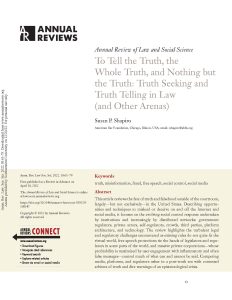Observers of the world of trust or fiduciary relationships have identified an evolution from institutional trust—which flows upward from individuals to states, organizations, and third parties—to distributed trust—which “flows laterally between individuals, enabled by networks, platforms, and systems” (Botsman 2017)—for example, the difference between the dollar and bitcoin, the New York Stock Exchange and Kickstarter, the New York Times and Facebook, or the United Way and GoFundMe. Fueled by new technologies, distributed trust is often virtual, digital, global, decentralized, algocratic, and sometimes structured to escape legal or government oversight.
This capstone project revisits my scholarship on “traditional” institutional trust to examine the legal and social control of computer-mediated distributed trust—what I am calling Trust 2.0. The project will survey new developments in the role of law, regulation, and social control of trust in the internet age. It will examine the opportunities, strategies, efficacy, and limitations of these measures. It will explore the often-belated scrutiny by legal institutions of forms of trust that intentionally sought to escape state or legal oversight. It will examine how this regulatory landscape has evolved over the relatively short lifespan of Trust 2.0.
In exploring these questions, I will begin with sites that leverage my expertise on the regulation of securities, banking, the professions, and the news. Case studies may include the social and legal control of crowdfunding, cryptocurrency and blockchain, fake news, the emergence of a new profession of “trust scientists,” and reputational rating systems. This synthesis of very disparate manifestations of the social and legal control of Trust 2.0 will draw largely on extant data, archives, reports, scholarly literature, as well as some interviews with industry informants.


